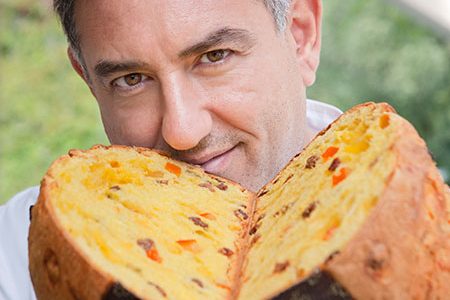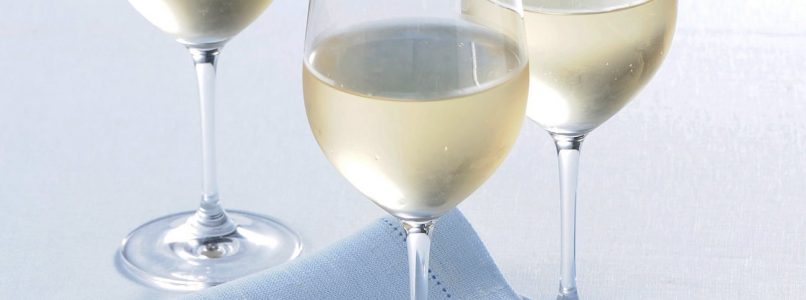We interviewed the pastry chef from Campania who won the Panettone World Championship 2021 to get his personal advice on choosing and matching the classic leavened product for the holidays.
From his laboratory in Minori, in the heart of the Amalfi Coast, the pastry chef Sal De Riso has now literally conquered the world: in fact, he is the best second panettone of the Panettone World Championship 2021, Second edition of the biennial competition dedicated to the famous Lombard leavened cake. On the podium, two other masters from Campania: Aniello Di Caprio of the Pasticceria Lombardi of Maddaloni (Caserta), second, and Giuseppe Mascolo by El Sombrero di Visciano (Naples), third. A victory that confirms the trend: panettone is increasingly a national and international heritage. Not by chance the three winning panettone will be presented in November at Hong Kong's Central Market. The occasion will be an event that will intersect the culture and history of Italy with that of Asia, organized by the company La Vin Investment Group Limited.
A golden year, on the other hand, for Italian pastry after the victory at the World Cup. Moreover, Sal De Riso is one of the founders of the Academy of Master Yeast and Italian Panettone and president of AMPI.
We reached him to ask him how with some tricks (as an expert) you can choose an artisan panettone really worthy of the name. And what, of course, does yours have in store for Christmas.
Sal, how do you feel after this umpteenth victory?
«I confess that it has been a great satisfaction for me who for years have been producing artisan panettone. However, I always remember that I learned the technique in Lombardy. Then I tried to work with it by developing a mixture and a technique of my own .
Like?
«With a much slower leavening than what the Lombard masters taught me. I focused a lot on the aromatic part: having wonderful citrus fruits at our disposal, then I added the vanilla beans from Haiti and the result was an aromatic bouquet that distinguishes me .
Other secrets?
«The leavening. The real artisanal panettone is made with live mother yeast refreshed 3 times a day and certainly not the powder one. The yeast processing goes from 5 in the morning to 17, its Ph must be close to 4 / 4.5 of acidity. Then the first evening dough is made based on water, sugar, a little malt, a whole flour rich in wheat germ, rich in fiber since, for years, I have also been working on the nutritional part of my desserts. We combine fresh butter and egg yolk. Once the dough is made, we put it to rise until the following morning at about 28 ° C: the dough triples, then at 5 in the morning we start with the second dough. Add sugar, other flour, Italian acacia honey, other yolk and reset. Then we decline the various tastes. Finally we put the dough in the appropriate pirouettes and let it rise 24 hours instead of the standard 8 at about 18-28 degrees. If we want, the secret is (also) slowness .
What's new this year?
«My new panettone is called Chocolaty: in the dough there is already 70% dark chocolate and then vanilla candied apricot wedges from Vesuvius ".
Any idea to serve it?
«Try it with a vanilla sauce, a scoop of Moscato ice cream for example and some berries.
What will your Christmas menu be like?
«I will stay on the Amalfi Coast because I work until the 24th: then I'll treat myself to a big family lunch. Our Christmas menu never misses the escarole stuffed with anchovies, capers and olives: it's a spectacular thing! And then the fried cod paired with salty panettone .
Salted Panettone?
«Oh yes, a delight: I never put it into production and at the moment I make a few limited pieces of it. The idea came to me from a collaboration with quality vegetable producers on the Sele plain. Everyone asks me: next year you will find it! Inside there are candied and semi-candied vegetables which I combine with papacelle (small, red and fleshy local peppers usually preserved in vinegar), anchovies from Cetera, capers and olives: it's a wonderful idea for Christmas. Given the farmers' love for their work, I renamed this creation The peasant in love".
What's new for 2022?
«I will open my bracioleria, again in Minori, by Easter: it will be the first restaurant of this type on the Amalfi Coast. The works, due to Covid, have been postponed a bit; but there we are .
Do you open a restaurant?
«It is actually a comeback: as a young man I worked for 8 years in the kitchens of a restaurant. First as an apprentice and then as a match chef. Finally I opened my own patisserie. An experience that, I must say, helped me a lot to better understand the combinations, to form my personal thoughts on food. In fact, over the years I have always made savory pastries. Then in 2016, in Minori, I expanded to a bistro with a small selection of typical traditional dishes: eggplant parmigiana, rice sartù, potato gattò and Ndunderi, typical of Minori .
What is it about?
«Of delicious gnocchi prepared with 70% ricotta and 30% flour, grated cheese and basil, which is usually served with a sausage sauce, but which we change according to the season. Porcini mushrooms and chestnuts, for example, in this period. During the summer, however, we dress them with vegetables from the garden ".
Artisan Panettone: how to choose it (and recognize it)
Yes, but how do you choose, in general, a good artisan panettone? And how does it distinguish itself from the industrial ones? This is how the master answered us
The proof of the cut
«When it is good, the panettone has a dough with an elongated and oval alveolation. This is also an index of digestibility .
Scent
"You must immediately smell a celestial and citrus scent, but also of vanilla: in the artisan one, berries are used, certainly not the aroma. Find out if there are small black dots in the dough. If there are quality candied fruit they will be soft and shiny, sweet and aromatic on the palate. In my classic panettone I put 30 kilos of candied fruit per 100 of dough .
Softness equal to freshness
«A good panettone must be moist and soft at the right point. This is an indication of freshness, but also of correct leavening. For my panettone it takes a total of 4 days of processing .
Color
"It must have a beautiful straw yellow color: it is the index of the presence of fresh egg yolk, a truly fundamental ingredient. Also for eggs I rely on biological suppliers in the area: the richness of the simplest raw materials makes a great product .
The "virtuous" label and the shelf life of the product
«The first thing to do is to read the ingredients that must speak clearly and be noble, as well as not too numerous: from flour to butter, from sugar to vanilla. Avoid products where you find mono and diglycerides associated with industrial products. Finally, in the artisan panettone it is essential to understand the duration: it usually expires after 60-70 days. If it lasts 8 months or more, it is not artisanal .


